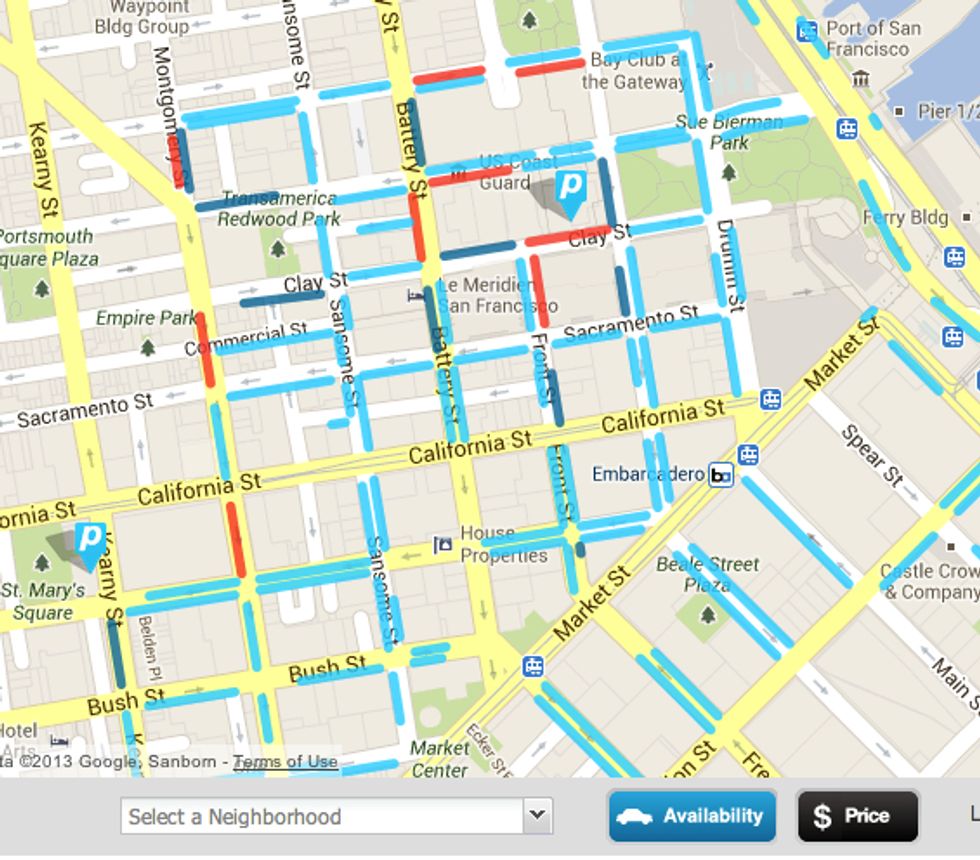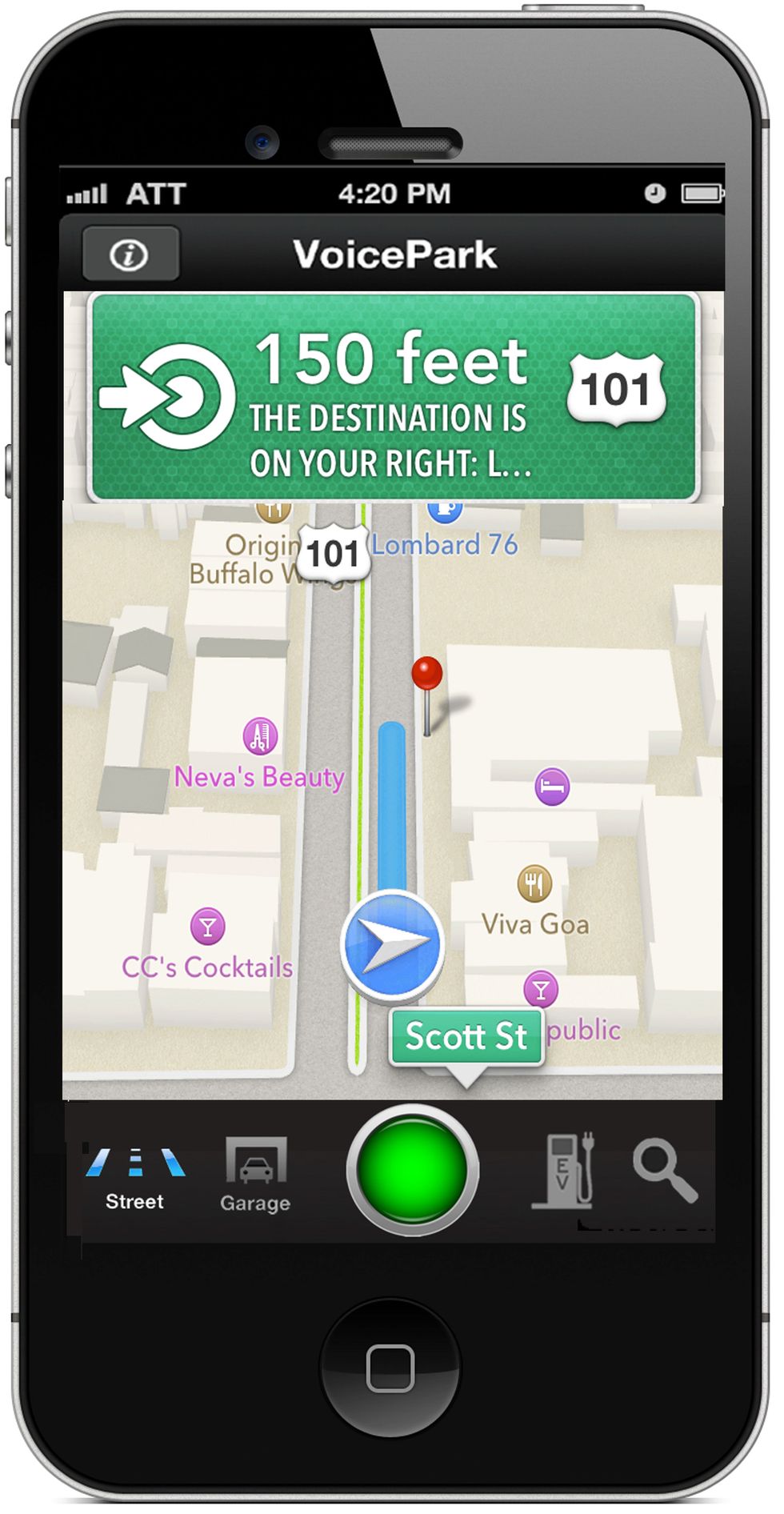A few days ago, I received an email from the SFpark team discussing some upcoming changes to SFpark, as the pilot project comes to a close in 2014.
Dear David,
The San Francisco Municipal Transportation Agency established the SFpark pilot, using new technology and policies to improve parking in San Francisco.The pilot aimed to reduce traffic by helping drivers find parking spaces more quickly. More parking availability makes streets less congested and safer. Improved parking meters that accept credit and debit cards and phone payment reduce frustration and parking citations. As the pilot phase comes to a close in 2014, the project will continue to operate and any major changes will be considered after evaluation is completed in Spring 2014.
In the meantime, there will be some changes to the SFpark mobile app. and the data feed that some other private parking mobile apps also use. As of January 1st, 2014, the parking sensors in the street will be turned off and their data feed will no longer be available as parking sensor batteries have reached the end of their useful lives. This means that the real-time information on parking space occupancy will not be available for mobile apps and similar uses.
The SFpark data feed and app will continue to show meter parking rates, as well as real-time space availability and rates at parking garages. The SFMTA will continue to conduct demand-responsive rate changes to find the lowest rates possible to help ensure there are a minimum number of open parking spaces on each block to reduce circling and double-parking.
The SFMTA and the U.S. Department of Transportation are both now preparing to evaluate the pilot using data collected during the pilot project.
Thank you for your continued interest in the SFpark pilot project.
Best regards,
San Francisco Municipal Transportation Agency (SFMTA)
While we await the formal in-depth evaluation, there are some preliminary findings that indicate what the future holds for the SFpark program.
UCLA Urban Planning Professor and doctoral student Gregory Pierce, in their April 2013 report, Getting the Prices Right: An Evaluation Of Pricing Parking By Demand in San Francisco, describe that the dynamic pricing concept of SFpark as "a program that adjusts parking prices to achieve a target parking availability of one or two open spaces on each block."
While some skeptics think that SFpark was merely a smokescreen to raise prices, preliminary findings have demonstrated otherwise. Shoup and Pierce write in the preliminary review how this model, while creating availability, on average has not raised prices overall. They write, "Prices increased in 32 percent of the cases, declined in 31 percent, and remained the same in 37 percent, with almost no change in the average price."
Another part of the SFpark program that will be evaluated is the web of vehicle detection sensors (vds) that were placed in 8200 on-street parking spots in the pilot areas. These sensors send information to the server about whether or not the space is occupied. Each driver, instead of circling looking for parking, if using an integrated mobile application, is then guided to the exact closest available spot.
When the vehicle detection sensor network data was integrated with the mobile app VoicePark, we found that the average time that it took drivers to find a parking spot was reduced from an average of 6.5 minutes to 45 seconds.
Both aspects of the project, the sensor system and dynamic pricing, are still works in progress, but the pilot project has allowed everyone involved to learn an enormous amount about what works and what doesn't, and the collaborative spirit has allowed it to become an even more innovative project than initially conceived.
To allow what's been accomplished by the Sfpark project really sink in, consider this... before this pilot study began just a few years ago, nobody even really knew exactly how many parking spots there were in the city. With an integrated vehicle detection sensor system, not only is it known precisely how many spots there are, but it is also known precisely which ones are occupied; which ones are available; and the driver, when looking for parking is guided by a pleasant voice to the absolute closest available spot, in under a minute. And this all happens in real-time!
We sometimes take technological advancements for granted. But going from not knowing how many parking spots there were, to what exists now, is indeed impressive. From multiple perspectives as a driver, a developer, and as someone deeply involved in furthering the concept of sustainable urban mobility, the SFpark pilot was indeed an enormous success.
Looking at the successes of SFpark from a sustainability standpoint. The ability to get all drivers into parking spots quickly, efficiently is critical. Why? Consider this; According to a Columbia University and Fabernovel study, 40% of all fuel consumed in downtown metro areas is done so while looking for a place to park. And, in an earlier UCLA Urban Planning study, Professor Shoup found that close to one-third of all downtown metropolitan traffic is composed of cars circling looking for parking.
The average car emits one to two pounds of CO2 per mile into the atmosphere, so from an environmental perspective, full deployment of an integrated system also makes enormous sense.
Based on these findings, if a completely operational and well-maintained system of vehicle detection sensors, integrated with a mobile application, and/or integrated into the cars navigation sytem were to be fully deployed in San Francisco, the system could potentially prevent the City's 535,000 vehicles from circling on the street for a total of 3 million less minutes per day. The butterfly effect of less cars circling is something that can only be positive for the entire urban mobility web: cars, delivery vehicles, bikes, and pedestrians. And, if this smart parking system were to be deployed globally, the positive impact on the environment would be huge.
After the SFMTA and the U.S. Department of Transportation sit down and thoroughly evaluate the pilot program, the future of the SFPark program will be decided.
From my perspective, and from the preliminary findings, it looks like great things are up ahead on the streets of San Francisco.
David LaBua is a leader in the sustainable urban mobility movement, author of Finding the Sweet Spot, and founder of VoicePark, the world’s first voice-guided mobile app that guides drivers to the closest available parking spot in real-time for free. You can follow him on twitter@ParkingGuru.






















